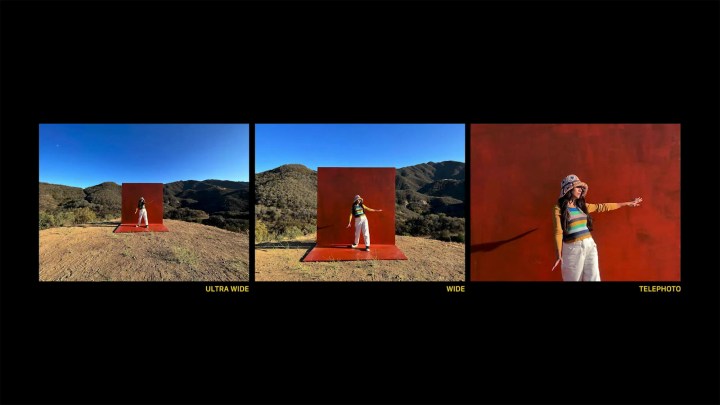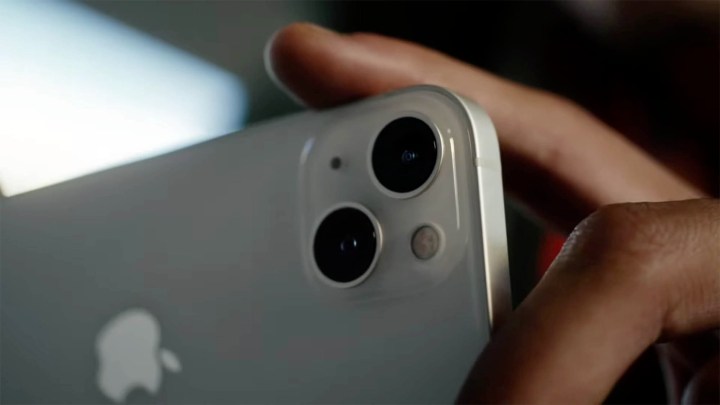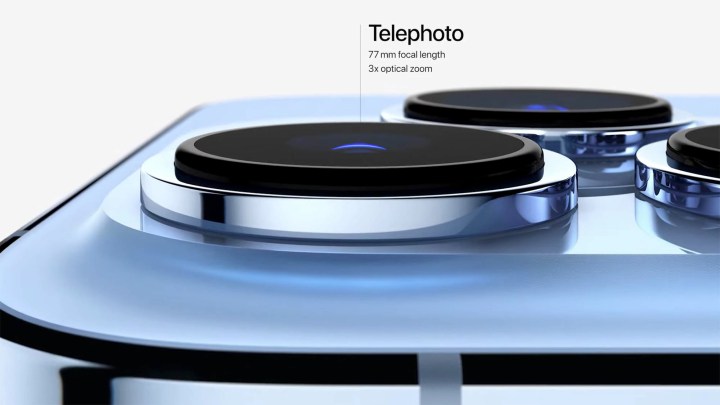Apple announced the new iPhone 13 and iPhone 13 Pro during its California Streaming launch event on September 14, confirming long-standing rumors. The iPhone 13 series takes mobile tech to a new level in many ways, but perhaps the most exciting upgrades come in the new capabilities of their cameras. The advanced optics and sensors push the boundaries of what a compact mobile device is capable of.
Between the four different models of the iPhone 13, you will find two different camera systems: A dual-camera system in the iPhone 13 and iPhone 13 Mini, and a triple-camera system in the iPhone 13 Pro and iPhone 13 Pro Max. Previously, the iPhone 12 Pro and Pro Max featured different cameras, and you had to opt for the larger and more expensive Pro Max to get the best iPhone camera. With the iPhone 13, it’s possible to purchase the more pocketable (and affordable) iPhone 13 Pro and not sacrifice camera features (except in one minor regard).

The iPhone 13 camera is probably good enough for most people
We’ll start with the base-level iPhone 13 camera. This gets you two 12-megapixel (MP) rear cameras, one with a wide field of view and a very bright f/1.6 aperture, the other with an ultrawide 120-degree field of view and a darker f/2.4 aperture. The camera lenses are coated in sapphire crystal to resist scratches, and have been turned 45 degrees in their housing in order to fit the upgraded optics into the iPhone 13. There’s sensor-shift optical image stabilization for the wide camera, and both cameras boast greater lowlight capability. Extra camera features include a portrait mode with bokeh and depth control, adjustable portrait lighting effects, True Tone flash with Slow Sync, and the ability to capture panoramas up to 63MP. Burst mode is also present, as are photo geotagging and Night mode.
Smart HDR 4 is now capable of recognizing as many as four different people in a scene in order to optimize contrast, lighting, and skin tones for each person. Deep Fusion activates automatically in challenging lighting situations to analyze multiple exposures and increase photo quality in low light. Photographic styles are essentially smart filters that selectively apply adjustments to your photos. For example, choosing the vibrant style boosts colors and contrast, but the phone will maintain natural skin tones in human subjects.
In terms of video, the base iPhone 13 can capture 4K video at up to 60 frames per second (fps) and 1080p at up to 240fps. Extra features include QuickTake Video, Audio Zoom, time lapse, and night mode time lapse.

Cinematic mode can be a game-changer for amateurs
Cinematic Mode debuts in the iPhone 13, boosting the phone’s capacity to capture more professional-quality video. Perhaps among the most vital of the features in Cinematic Mode is rack focus, where the camera shifts the focus from one subject to another smoothly while shooting video. The iPhone 13 will hold focus on your chosen subject and generate realistic depth of field effects around it. Cinematic mode is also capable of anticipating when a new subject is approaching your scene so it can automatically shift focus when they enter the field of view.
Cinematic mode actually gives you some advantages over traditional cinematography.
Cinematic Mode actually gives you some advantages over traditional cinematography. With a typical camera, you are stuck with how you focused when you shot your video, but with Cinematic Mode, the focus and blur can be easily adjusted in postprocessing. This isn’t typically something that can be easily done by amateurs, so it’s impressive to see it in the hands of the average consumer. The ability to shoot in Dolby Vision HDR further increases the cinematic capability of the iPhone 13, though keep in mind that cinematic mode is limited to 1080p at 30fps.

The front TrueDepth camera has the same 12MP as the rear cameras, and a f/2.2 aperture. Most of the features present in the rear cameras are also present in the front camera, though slow motion frame rates at 1080 max out at 120 fps. The TrueDepth camera also powers Face ID.

The iPhone 13 Pro pays dividends for macro and telephoto shots
While the capabilities that have been baked into the base-level iPhone 13 camera are impressive, it’s the iPhone 13 Pro camera where the whole system is pushed to the next level. The sensors here may all have the same 12MP resolution, but they bump up their aperture values to f/1.5 for the wide camera and f/1.8 for the ultrawide camera. The 13 Pro also adds a 77mm-equivalent telephoto camera with a f/2.8 aperture, giving it a total of a 6x zoom range between the ultrawide and telephoto cameras. The telephoto camera’s focal length makes it ideally suited to portrait photography, as well as for using a compositional tool.
It’s the iPhone 13 Pro camera where the whole system is pushed to the next level.

Macrophotography is a big part of the iPhone 13 Pro, as its ultrawide camera can focus down to just 2 centimeters for super-close-up photos and video. The wide camera features a larger sensor, extremely bright aperture, and lidar scanner for exceptional lowlight photography and night mode portraits. Night mode is also now available in the telephoto camera, as well as in the ultrawide camera. Cinematic mode on the 13 Pro is also enhanced by these superior cameras and the addition of telephoto capabilities.
Another upgrade over the base iPhone 13 camera is the 13 Pro’s ability to shoot Apple ProRAW photos and ProRes video at up to 4K at 30 fps, though only the 256GB storage model and above support this ability. On the plus side, there’s no differences between the Pro and the Pro Max, and other video capabilities mirror that of the basic iPhone 13.

Which iPhone 13 model is the best for you?
While the iPhone 13 Pro camera certainly offers significant advantages over the iPhone 13, both offer impressive, overlapping features and capabilities. It’s important to note, though, that the iPhone 13 only goes up to 512GB of storage, while the 13 Pro offers as much as 1TB of storage. This means that all that high-resolution, high frame rate HDR video is going to fit much more easily in a top-spec 13 Pro than in the higher-end base model iPhone 13. And it’s only the 256GB and larger models that can handle 4K ProRes video at 30 fps; it’s disabled for the lower-storage models. If you’re big on photos and video, and you never want to have to worry about storage, that’s certainly the one to get even at its princely $1,599 price.
If you’ve made up your mind about which model you want, be sure to take a look at our guide to iPhone 13 pre-orders.



